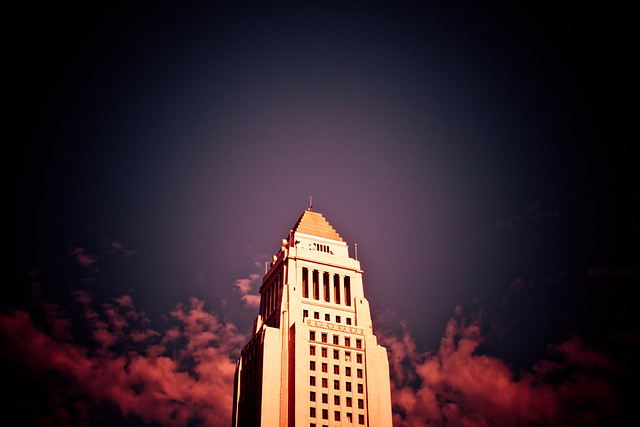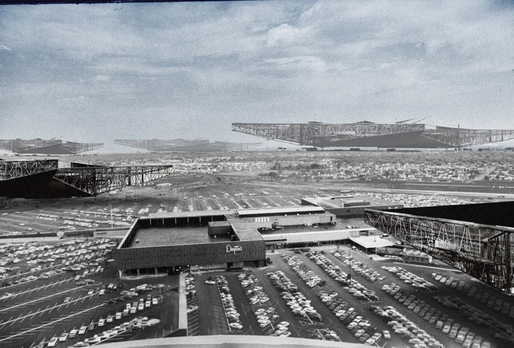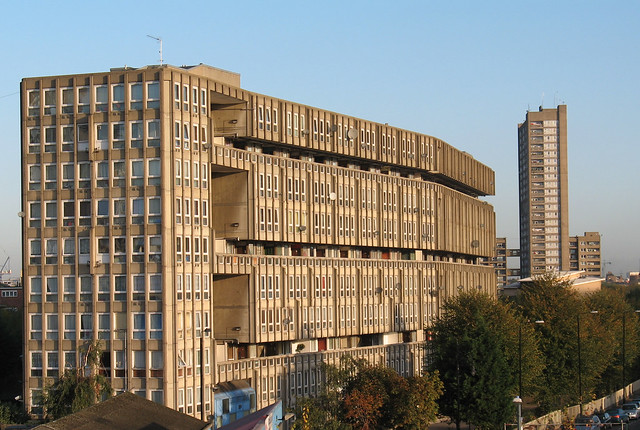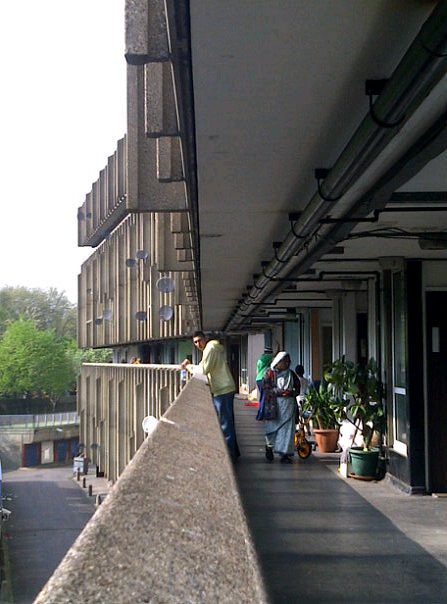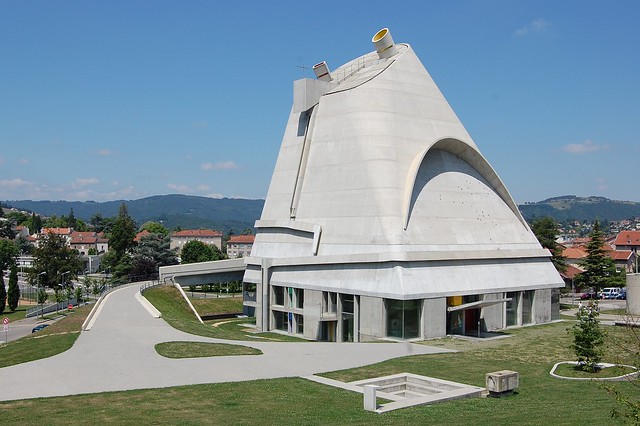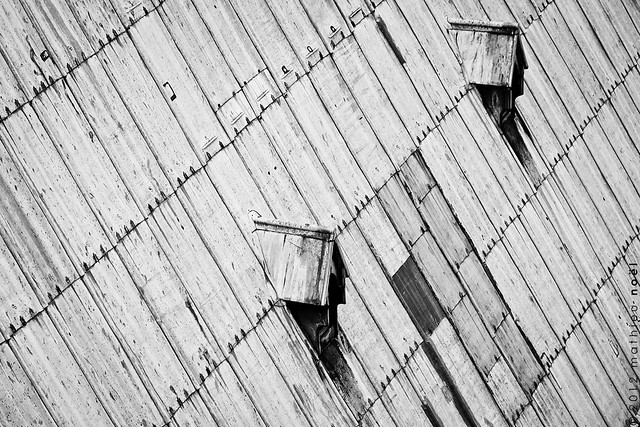Chances are, you know Moby best for his electronic dance music. But it turns out the eclectic-minded musician has another life, as an architecture buff who recently moved to LA and now writes a blog about buildings here he loves. The blog is called, simply, Moby Los Angeles Architecture Blog, and features his photos of local architecture—from commonplace courtyard apartments to iconic houses by Frank Lloyd Wright—as well as his musings on the urban environment. Frances Anderton talks to Moby about his love of architecture.
Category: Architecture
Beinecke Rare Book and Manuscript Library
You call them Lobbyists, we call them Expeditors
Big Media Matt has a prickly post riffing on a Politico story arguing that, Mitt Romney Shouldn't Need a Dedicated Lobbyist To Build His Tacky Megamansion:
Romney’s house sounds tacky and extravagant, but it’s not some kind of public safety hazard in urgent need of regulation. You shouldn’t need dedicated lobbyists to get permission to build buildings on property you legitimately own. At the end of the day, Romney is going to be able to hire the lobbyist and get his mansion built. But these same hurdles afflict people who might be interested in affordable housing for low-income people or simply regular old market rate structures for the middle class.
Not to defend Mitt Romney, but aesthetics aside, hiring a third-party to navigate regulations isn’t ground breaking.
In New York City, generally you need an Expediter to file a permit application at the Department of Buildings in order to assit you through the different building codes (there are three currently in force), zoning codes and the general bureaucracy which each building permit application must go through to gain approval. The regulation complexity of having 200+ year old tenement buildings next to skyscrapers (the above photo has structures built ranging from 1883 to 2011) has created a new middleman whose job is to push paper, and in some cases, offer code review. Sometimes the Expediter is the very same architect which is designing and overseeing the project; I was once an Expediter and dealt directly with the DoB on projects I was designing under the review of a licensed architect. This is normal and part of the current process in New York City, Washington DC, Cincinnati, and other locations.
Aesthetics aside, I would argue that structures are, contra Yglesias, a public safety hazard in urgent need of regulation: buildings can, and do, fall down killing people. Having an effective, and efficient, code review process is necessary and proper to guard the citizenry from unsafe and hazardous building. Just recently an architect in California was charged in the death of a firefighter after he installed four outdoor fireplaces inside the house, in violation of building codes. This architect basically built a firetrap, and used faulty piping for the sprinklers which appears to have directly contributed to the death of a firefighter.
There are tons of other examples of willful or unintentional negligence by architects, engineers and builders which has caused building damage and death. This is why becoming a licensed architect is so onerous, and why building codes (which often seem to get in the way of your precious design) are to be followed.
Can the permit process be more efficient, and less encumbered by red tape? Yes. Should government find a balance between efficiency and the mandate to create a safe environment? Yes. Does the presence of this third-party mean we should deregulate building permit applications? No.
I hope that Matt is arguing for more efficient code review, rather than no code review; the only reason Politico called Romney’s expediter a Lobbyist is that it fits Romney’s larger narrative of being out of touch and super rich (which is probably true).
Megastructures are the Shopping Malls of the Avant-Garde
The avant-garde is a paradoxical state. In order to exist, it relies on its incongruous condition of being both fundamentally contemporary and ahead of its time. A conceptual palimpsest, the avant-garde requires writing its history over its own past keeping a vulnerable balance between present problems, and possible future solutions. All about contextualizing the perfect timing, what happens when the avant-garde goes out of sync; when its solutions are overlooked for being too premature, or ridiculed for being delayed?
Robin Hood Gardens slated for Demolition
Four years ago Gordon Brown wants to demolish Robin Hood Gardens – the brutalist council housing designed by Alison and Peter Smithson. Even a successful design competition could not spare its fate. Londonist updates us on the status of Robin Hood Gardens:
Opened in 1972, the estate, formed of two long concrete blocks designed by husband and wife team Alison and Peter Smithson (also responsible for the Economist building in Piccadilly) had become a cause célèbre in recent years, ever since tearing it down was first proposed in 2008. Architects Zaha Hadid and Richard Rogers, and former Guardian architecture critic Jonathan Glancey, joined a campaign by Building Design magazine to save the estate, and it was the subject of an exhibition. However, the decision not to award it listed status sounded the death knell.
Soon we will only have a Flickr set of photos to remember this strange, and alienating building.
Notre Dame du Haut, Ronchamp – Le Corbusier
While we took a look at Saint-Pierre, Firminy by Le Corbusier yesterday, let’s look at Notre Dame du Haut, Ronchamp: Le Corbusier 1955 tour de force.

Photo by proligde

Photo by Ryan Patterson

Photo by Anna Armstrong

Photo by brewskizzlr

Photo by Anna Armstrong
St Pierre Church, Firminy – Le Corbusier
Los Angeles v New York City: Which One is more Dense? You would be surprised…
The US Census Bureau has begun to release findings from the 2010 Census, showing a considerable Growth in Urban Population Outpaces Rest of Nation:
The nation’s most densely populated urbanized area is Los Angeles-Long Beach-Anaheim, Calif., with nearly 7,000 people per square mile. The San Francisco-Oakland, Calif., area is the second most densely populated at 6,266 people per square mile, followed by San Jose, Calif. (5,820 people per square mile) and Delano, Calif. (5,483 people per square mile). The New York-Newark, N.J., area is fifth, with an overall density of 5,319 people per square mile.
What is interesting to me, is that using the MSA, which we have talked about before (Metropolitan and Micropolitan Statistical Areas), but it is helpful to remember that the OMB defines MSA’s as, “one or more adjacent counties or county equivalents that have at least one urban core area of at least 50,000 population, plus adjacent territory that has a high degree of social and economic integration with the core as measured by commuting ties.” Below is a comparison of the Los Angeles MSA (on the left) with the New York MSA on the right, along with data from the 2010 Census:

Dark poche indicates urbanized area or urban cluster of 10,000 or more
| MSA | Population | Area | Density |
|---|---|---|---|
| Los Angeles: LA, Long Beach, Anaheim |
12,150,996 people | 1,736.02 sq. miles | 6,999.3 people per sq. mile |
| New York: NYC, Newark, Bridgeport |
18,351,295 people | 3,450.2 sq. miles | 5,318.9 people per sq. mile |
As you can see, the New York MSA is almost twice as big in land area as the Los Angeles MSA. If we look back up to the definition of a MSA, specifically the part about a high degree of social and economic integration with the core as measured by commuting ties, this makes sense: New York’s subway and commuter rail is magnitudes bigger and more effective than Los Angeles.
There is no doubt that the less dense suburban areas of Connecticut, New Jersey and Long Island bring down the top-line density figure. In this case, the MSA comparison hides more than it reveals: while LA is undoubtable denser than popular notions give it credit for, the more complete transportation system of New York creates a larger livable catchment area.
Also see Nate Berg’s article, U.S. Urban Population Is Up … But What Does ‘Urban’ Really Mean?.
Domus: Paper tigers
via Paper tigers:
The utopian projects of paper architecture still today exemplify the visionary power of architecture. They are not only artworks, but also concentrations of design energy projected towards the future.
Hugh Ferriss – Hoover Dam
… Hugh Ferriss – Hoover Dam, a photo by x-ray delta one on Flickr.
